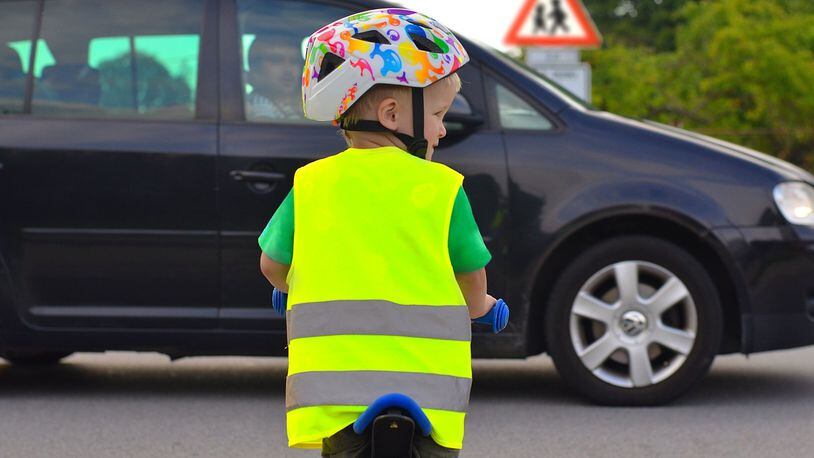Follow these tips to stay out of harm’s way and avoid an emergency:
Wear a helmet
Helmets reduce the risk of serious, long-term head and brain injuries in the event of a crash or accident. No matter which activity you enjoy, properly fitted helmets are a must and should be worn regardless of age. Helmets for biking, in-line skating, and skateboarding are all made differently, so get the right one for your activity.
Gear up
Make sure equipment fits and is the right size for you or your kids.
• Sit on the seat of your bike and grasp the handlebars. If the balls of both feet aren’t touching the ground, the bike is too big.
• In-line skates should be fitted, and blades that don’t fit right can lead to sore feet, blistering, and unstable blading. In-line skates should fit snuggly without reducing circulation or cramping the toes.
• Skateboards come in various widths and lengths, so get a board that’s right for your size and experience level.
Check that everything works
Inspect your equipment before every ride.
• Check that tires are properly inflated and that the brakes and gears work on your bicycle. If you ride on the road, your bike should have a headlight and taillight that are visible from 500 feet away. If you don’t have lights, get reflectors that are visible from the front, rear, and sides.
• In-line skates should be checked to ensure the wheels and brakes aren’t worn down and that no debris is blocking the wheels.
• Check your skateboard for loose, cracked, or broken parts; sharp edges; or a slippery surface. All are signs that your board needs a repair.
Dress for success
• Wear closed-toed shoes. Proper athletic shoes are important, especially for skateboarding. Never wear flip-flops while riding a bike or skateboarding.
• Wear brightly colored, fluorescent, or reflective clothes that motorists can easily spot if you plan to ride your bike or in-line skate near traffic.
• In addition to a helmet, wrist, elbow, and knee pads are essential for activities like skateboarding and in-line skating.
Kettering Health Network is a faith-based, not-for-profit healthcare system. The network has eight hospitals: Grandview, Kettering, Sycamore, Southview, Greene Memorial, Fort Hamilton, Kettering Behavioral Health and Soin.
About the Author
